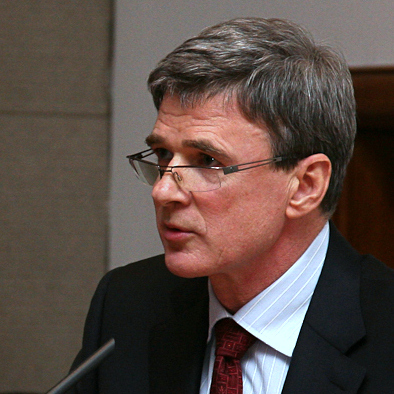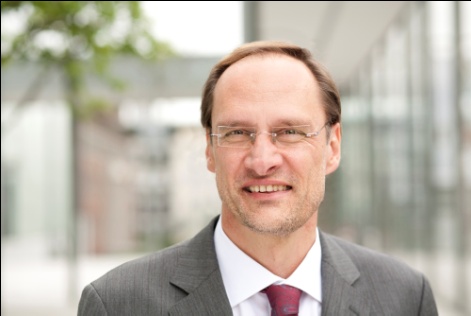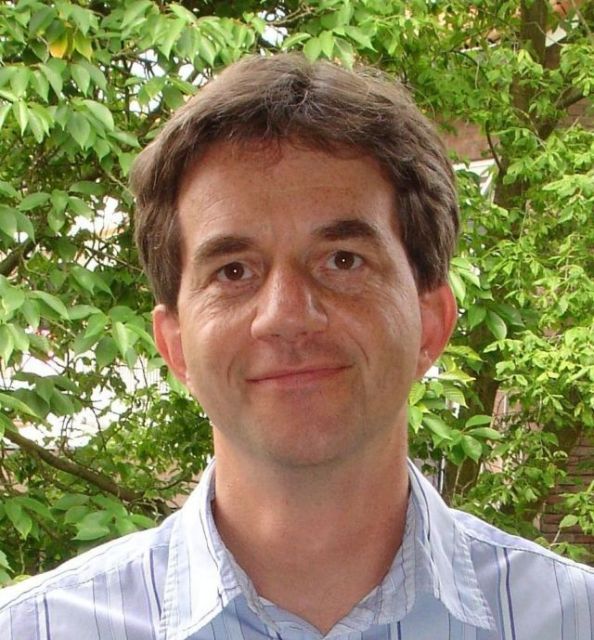Keynote Speakers
Some Computational Aspects of Robot Kinematic Redundancy
Jadran Lenarčič, Jožef Stefan Institute, Slovenia

Abstract
Computations in robotics cover a rich spectrum of problems at the junction of mechanics, computer science, engineering and
mathematics. In this talk the emphasis will be given to robot kinematics, its analysis, design and optimization with respect to different
tasks. This will include a brief discussion on the direct and inverse kinematics problems of serial and parallel mechanisms, kinematic
singularities, workspace determination, manipulability, as well as kinematic flexibility. Examples will present peculiarities in robot
and human motion performing different tasks, such as the manipulation of heavy objects or the vertical jump, with the focus on kinematic
redundancy. Redundant robots possess too many degrees of freedom; their number exceeds the number required by the task. Therefore,
redundancy gives to the robot an immense source of freedom and enables it to solve different tasks in an infinite number of ways.
The robot can simultaneously solve additional secondary tasks of lower priority. We will discuss various aspects in robot programming
and design in comparison with humans.
Short Biography
Prof. Jadran Lenarčič received his B.Sc., M.Sc., and Ph.D. degrees from the Faculty of Electrical Engineering, University of Ljubljana,
Slovenia, in 1979, 1981, and in 1986, respectively. He has been appointed by the J. Stefan Institute since 1979 and holds a professorship at
the Faculty of Electrical Engineering, Ljubljana, since 1988. He served as Head of the Robotics Laboratory of J. Stefan Institute (1985-1995)
and Head of the Department of Automatics, Biocybernetics and Robotics (1995-2005). Since 2005 he is Director of the J. Stefan Institute.
Basic research interests of J. Lenarčič are in robotics, robot kinematics, biorobotics and humanoid robotics. His contributions are in the
areas of modeling and simulation of robots, mathematical evaluation and optimization of robot mechanisms, modeling of human upper extremity
and control of redundant robots. He edited a series of twelve international books on Advances in Robot Kinematics and is co-author of two
monograph books "Robot Mechanisms" and "Robotics", all published by Springer. J. Lenarčič is the initiator and chairman of the well-known
international symposia Advances in Robot Kinematics; the first was organized in 1988 in Ljubljana (Slovenia) and the last in 2012 in
Innsbruck (Austria).
Prof. Lenarčič is a member of the Slovenian Academy of Engineering (President 2011/12) and a Corresponding Member of Accademia delle Scienze
di Bologna, Italy.
Solving Optimization Problems in Industry: An Arms Race
Thomas Bäck, Leiden University, The Netherlands

Abstract
Many industries use simulation tools for virtual product design, and there is a growing trend towards using simulation in combination with
optimization algorithms. The requirements for optimization under such circumstances are often very strong, involving many design variables and
constraints and a strict limitation of the number of function evaluations to a surprisingly small number (often around one thousand or less).
Tuning optimization algorithms for such challenges has led to very good results obtained by variants of evolution strategies. Evolutionary
algorithms are nowadays standard solvers for such applications. In the presentation, sample cases from industry are presented, their challenges
are discussed in more detail. Results of an experimental comparison of contemporary evolution strategies on the BBOB test function set for a
small number of function evaluations are presented and discussed, and further enhancements of contemporary evolution strategies are outlined.
Our practical examples are motivated by industrial applications. A typical challenge is to find innovative solutions to a design optimization
task. Based on a suitable definition of innovative solutions, an application of this concept to an airfoil design optimization task is discussed
in the presentation. Discussing these applications and the variants of evolution strategies applied, the capabilities of these algorithms for
optimization cases with a small number of function evaluations are illustrated.
Short Biography
Thomas Bäck is full professor of computer science at the Leiden Institute of Advanced Computer Science (LIACS), Leiden University,
The Netherlands, since 2004.
He received his PhD in Computer Science (under supervision of Hans-Paul Schwefel) from Dortmund University, Germany, in 1994, and then
worked for the Informatik Centrum Dortmund (ICD) as department leader of the Center for Applied Systems Analysis. From 2000 - 2009, Thomas
was President of NuTech Solutions GmbH and CTO of NuTech Solutions, Inc. In 2009, he founded divis intelligent solutions GmbH. The company
provides data mining and optimization software and services to customers such as BMW, Daimler, Ford, Honda, and many others.
Thomas Bäck has more than 200 publications as well as a book on evolutionary algorithms, entitled Evolutionary Algorithms: Theory and Practice,
and is co-editor of the Handbook of Evolutionary Computation and the Handbook of Natural Computing, and co-author of the book Contemporary
Evolution Strategies (Springer, 2013). He is editorial board member of a number of journals and has served as program chair for major conferences
in evolutionary computation. He received the best dissertation award from the Gesellschaft für Informatik (GI) in 1995 and is an elected fellow
of the International Society for Genetic and Evolutionary Computation for his contributions to the field.
In Vivo Veritas: Towards the Evolution of Things
A. E. (Gusz) Eiben, VU University Amsterdam, The Netherlands

Abstract
Evolutionary Computing (EC) is the research field concerned with artificial evolutionary processes in digital spaces, inside computers.
In about three decades the EC community learned the ‘art of taming evolution’ and developed several evolutionary algorithm variants to solve
optimization, design, and machine learning problems. In all these applications, the reproductive entities are digital. This holds even in
evolutionary robotics where the evolved code is ported to a robot body and in evolutionary design where the evolved design is constructed
physically after the evolutionary process terminates. In this talk I present a vision about the next big breakthrough: the creation of
artificial evolutionary processes in physical spaces. In other words, I envision the ``Evolution of Things'', rather than just the evolution
of digital objects, leading to a new field of Embodied Artificial Evolution. After presenting this vision I elaborate on some of the technical
challenges and relate the main algorithmic/technical requirements to the current know-how in EC. Finally, I will speculate about possible
applications, their societal impacts, and argue that these developments will radically change our lives.
Short Biography
Gusz Eiben is Full Professor of Computational Intelligence at the Computer Science Department of the VU Amsterdam and Visiting Professor
in the Department of Electronics of the University of York. He is of the European early birds of Evolutionary Computing. Anecdotic fact: he
is the first author of the first paper of the first European conference in the area, the PPSN-1990. Since than he has published several
research papers and co-authored the first comprehensive book on Evolutionary Computing. He has been organizing committee member of practically
all major international evolutionary conferences (CEC, EP, EuroGP, EvoStar, FOGA, GECCO, PPSN) and editorial board member of related
international journals (including JEC, IEEE TEC, GPEH, NatComp, JCIS, TCS). A significant part of his work concerns the design and calibration
of evolutionary algorithms in an off-line (parameter tuning) and in an on-line fashion (parameter control). Over the last couple of years
he became interested in embodied evolutionary processes – see his TEDx talk
on this subject
here. His recent research is driven by the grand vision of
human-built physical evolutionary systems. These could be utilized as a radically new way of engineering and serve as an apparatus
to investigate deep scientific questions about evolution in a new substrate, different from carbon-based life as we know it.







